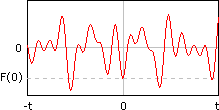Still kicking around
Nope, I didn’t fall off the face of the earth; I just have a full-time job.
Regular readers of the blog may have noticed a prolonged hiatus in posts. This pesky thing called “real life” keeps rudely intruding on my blogging career. The good news is, I love my job – especially the people-centric parts of it – even when it steamrolls me. The bad news is, it’s going to take me a while to empty the pipeline of planned posts, which presently includes more puzzle solving, computer graphics, and computer vision. Regular posting should get easier in the summer once the academic year ends.
In the meantime, let me offer a small morsel to tide you over: a repost of a tutorial on Perlin noise that I wrote as a college student almost exactly 16 years ago.
As the disclaimer in the linked document states, it is entirely outdated at this point. Curious readers interested in a modern treatment of procedural noise for computer graphics would do much better to start out by looking through Inigo Quilez’s articles and demos.
Despite its obsolescence, my 2001 article is still linked (via the Wayback Machine) on the Wikipedia page for Perlin noise1, and it even has a handful of citations on Google Scholar. My favorite part of the entire thing is the set of figures I lovingly created, pixel-by-pixel, in MS Paint, like this one:

The motivation for unearthing this piece was a request from a programmer in the process of assembling his own documentation on the topic, who found it helpful despite its age.
I had fun going back and rereading it. Hope you enjoy it, too!
-
I didn’t add the link myself, I swear! In fact, the archived copy seems to be from a mirror based out of Linköping University in Sweden. Who’d have guessed? ↩